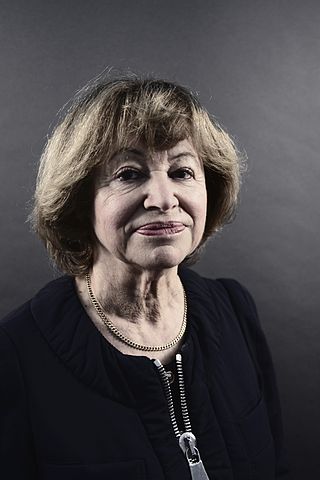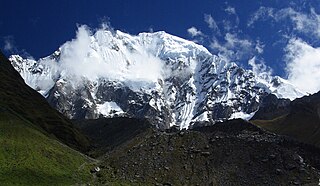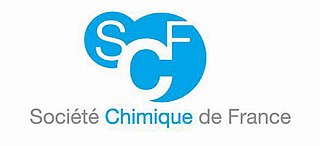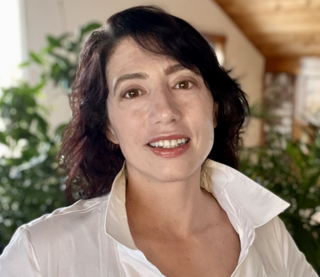Roger Balian is a French-Armenian physicist who has worked on quantum field theory, quantum thermodynamics, and theory of measurement. Balian is a member of French Académie des sciences. His important work includes the Balian-Low theorem. He teaches statistical physics at the École Polytechnique.

Huascarán, Nevado Huascarán or Mataraju is a mountain located in Yungay Province, Department of Ancash, Peru. It is situated in the Cordillera Blanca range of the western Andes. The southern summit of Huascarán, which reaches 6,768 metres (22,205 ft), is the highest point in Peru, the northern Andes, and in all of the earth's Tropics. Huascarán is the 4th highest mountain in South America after Aconcagua, Ojos del Salado, and Monte Pissis. Huascarán is ranked 25th by topographic isolation.
George Irving Bell was an American physicist, biologist and mountaineer, and a grandson of John Joseph Seerley. He died in 2000 from complications of leukemia after surgery.

Illimani is the highest mountain in the Cordillera Real of western Bolivia. It lies near the cities of El Alto and La Paz at the eastern edge of the Altiplano. It is the second highest peak in Bolivia, after Nevado Sajama, and the eighteenth highest peak in South America. The snow line lies at about 4,570 metres (15,000 ft) above sea level, and glaciers are found on the northern face at 4,983 m (16,350 ft). The mountain has four main peaks; the highest is the south summit, Nevado Illimani, which is a popular ascent for mountain climbers.

The Machiguenga are an indigenous people who live in the high jungle, or montaña, area on the eastern slopes of the Andes and in the Amazon Basin jungle regions of southeastern Peru. Their population in 2020 amounted to about 18,000. Formerly they were hunter-gatherer but today the majority are sedentary swidden cultivators. The main crops grown are manioc, maize, and bananas, but today commercial crops such as coffee and cacao are increasingly important. Their main source of protein used to be peccary and monkeys but today fish has become more important as game animals have become increasingly scarce as a consequence of the encroachment from highland immigrants to the area and the exploitation of the Camisea gas finds. The Machiguenga people have a preference for self-sufficiency when it comes to cultivating essential crops, made possible by their generous land allocation per capita, and the lack of conflict in their area.

Catherine Jeanne Cesarsky is an Argentine and French astronomer, known for her research activities in astrophysics and for her leadership in astronomy and atomic energy. She is the current chairperson of the Square Kilometre Array's governing body, SKAO Council. She was the first female president of the International Astronomical Union (2006-2009) and the first female director general of the European Southern Observatory (1999-2007).

Salcantay, Salkantay or Sallqantay is the highest peak in the Vilcabamba mountain range, part of the Peruvian Andes. It is located in the Cusco Region, about 60 km (40 mi) west-northwest of the city of Cusco. It is the 38th-highest peak in the Andes and the twelfth-highest in Peru. However, as a range highpoint in deeply incised terrain, it is the second most topographically prominent peak in the country, after Huascarán.

Santa Teresa District is one of ten districts of the La Convención Province in the Cusco Region of Peru.

John Whittle Terborgh is a James B. Duke Professor of Environmental Science at Duke University and co-director of the Center for Tropical Conservation. He is a member of the National Academy of Sciences, and for the past thirty-five years, has been actively involved in tropical ecology and conservation issues. An authority on avian and mammalian ecology in Neotropical forests, Terborgh has published numerous articles and books on conservation themes. Since 1973, he has operated the Cocha Cashu Biological Station, a tropical ecology research station in Manú National Park, Peru.

The Société Chimique de France (SCF) is a learned society and professional association founded in 1857 to represent the interests of French chemists in a variety of ways in local, national and international contexts. Until 2009 the organization was known as the Société Française de Chimie.

Pumasillo is a mountain in the Vilcabamba mountain range in the Andes of Peru, about 5,991 m (19,656 ft) high. Pumasillo or Sacsarayoc also refers to the whole massif. It includes the peaks Pumasillo, Sacsarayoc and Lasunayoc. It is located in the Cusco Region, La Convención Province. Its slopes are within the administrative boundaries of the Peruvian city of Santa Teresa.

The Vilcabambamountain range is located in the region of Cusco, Peru, in the provinces of Anta, La Convención and Urubamba. It extends between 13°10' and 13°27'S. and 72°30' and 73°15'W for about 85 km. Its highest peak is Salcantay, which is 6,271 m (20,574 ft) above sea level.
Panta also known as Chachacumayoc, is a 5,667-metre-high (18,593 ft) mountain in the Vilcabamba mountain range in the Andes of Peru. It is located in the Cusco Region, La Convención Province, on the border of the districts of Inkawasi and Vilcabamba. Panta lies east of Choquesafra.

Olivier Pironneau is a French mathematician who is a professor at the Université Pierre et Marie Curie and member of the French Academy of Sciences.

Alice Olivia Fox Cabane is a French and American author, public speaker, and the co-founder of Kindearth Tech. She is the former Director of Innovative Leadership for Stanford University's student accelerator, StartX. She is the author of The Charisma Myth and the co-author of The Net And The Butterfly, two books on charisma and the neuroscience of innovation, respectively.
Philippe Ascher was a French neuroscientist who was professor emeritus at the Université Paris Diderot. He devoted his research mainly to the characterization of cholinergic and glutamatergic neurotransmitter receptors. He was a corresponding member of the French Academy of Sciences since 1990.
The IncaDivide Race is a yearly, self-supported, ultra-distance cycling race across the territory of the Incas in South America and organized by the french organization BikingMan. The first edition took the participants through Ecuador and Peru in 2017. This is the first self-supported race to take place in South America. The inaugural edition route was about 3,500 kilometres (2,200 mi) long and went along some sections of the Qhapaq ñan, the legendary inca road network that was built by the Inca civilization. The main challenge of the race lies in its high altitude route and the challenging weather conditions of the Andes. All cyclists have to cycle across the Andes Cordillera with high passes above 4,000 metres (13,000 ft) on remote andean tracks and random road conditions. The inaugural race was held the 1st of July 2017. 17 athletes attempted to complete it but only 6 could reach the finish line. The fastest rider took less than 17 days to cycle from Quito to Cuzco.

Éric Karsenti is a French biologist. Research Director at the CNRS, he was the scientific director of the Tara Oceans expedition.












